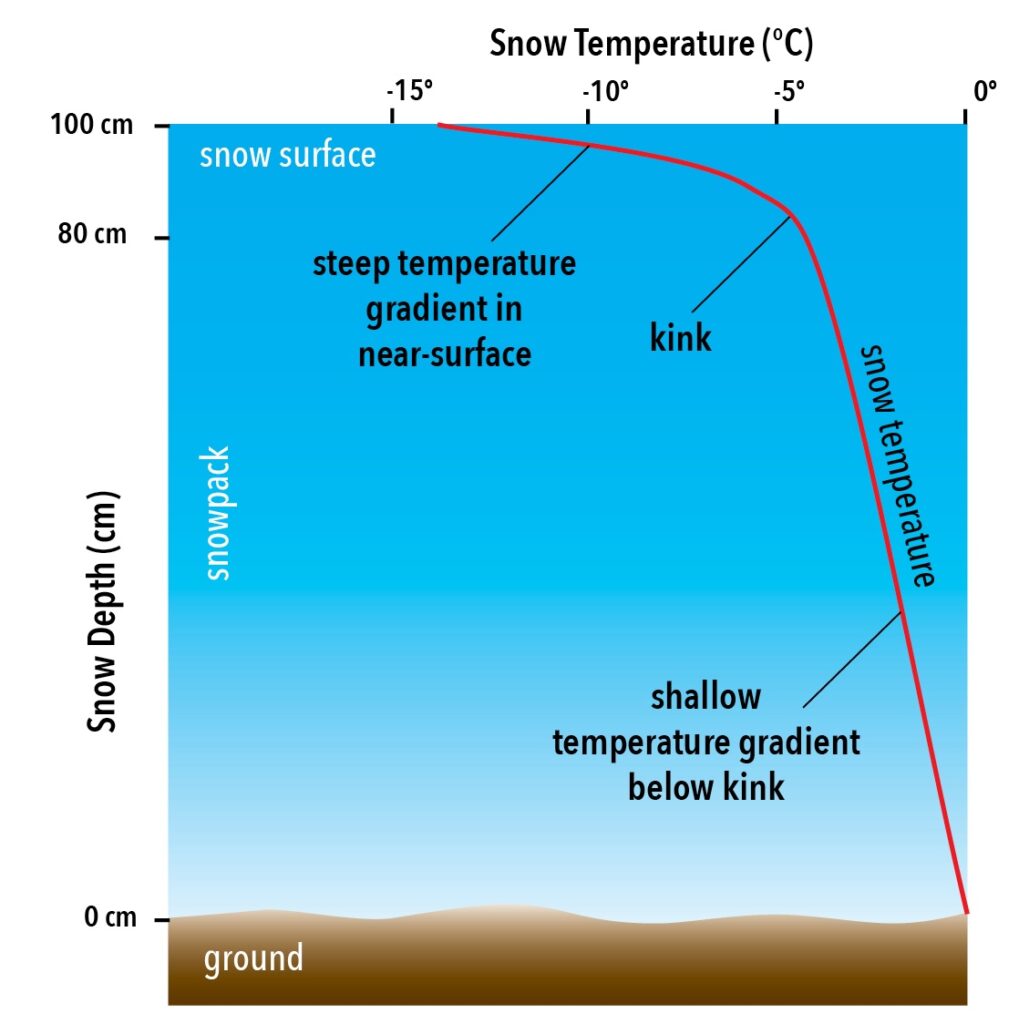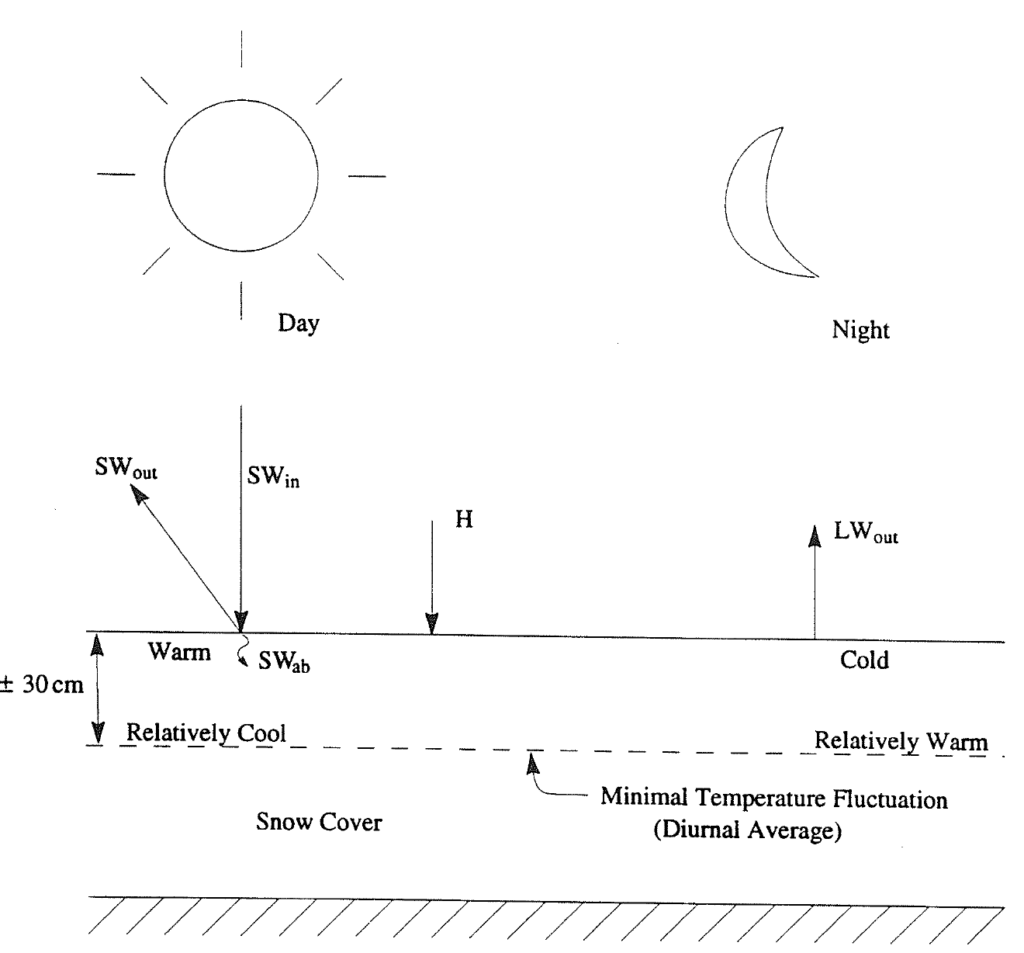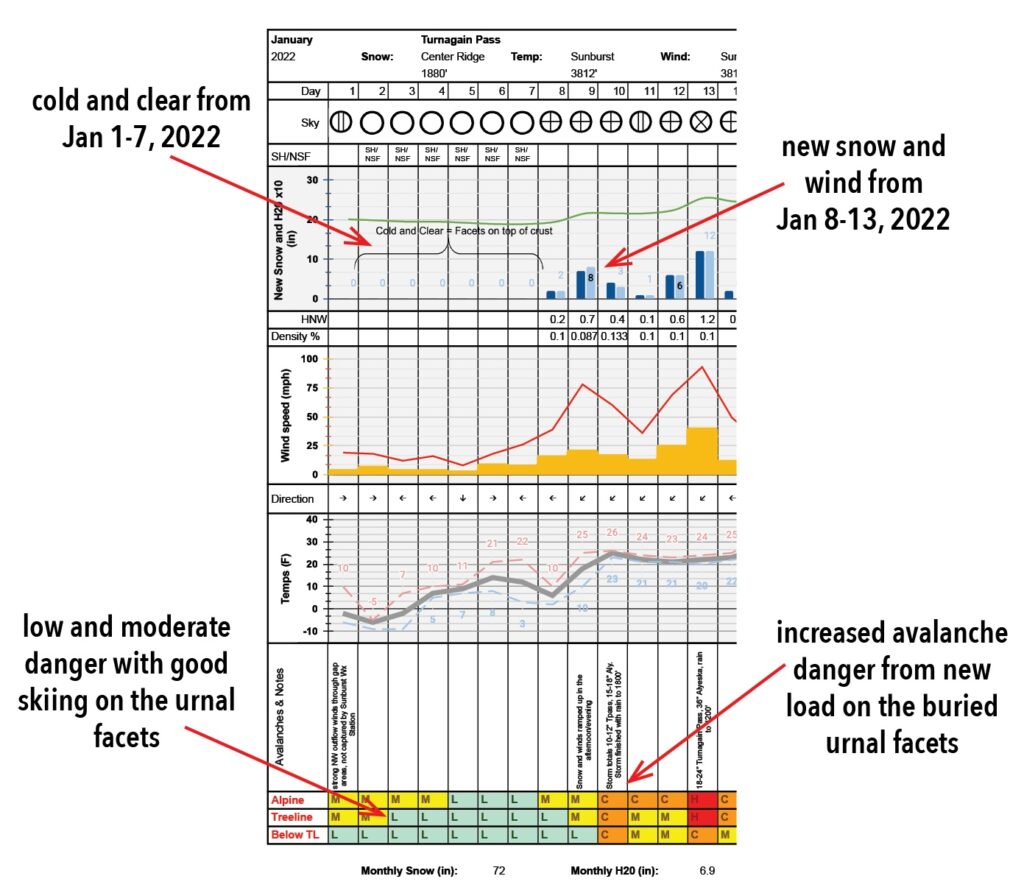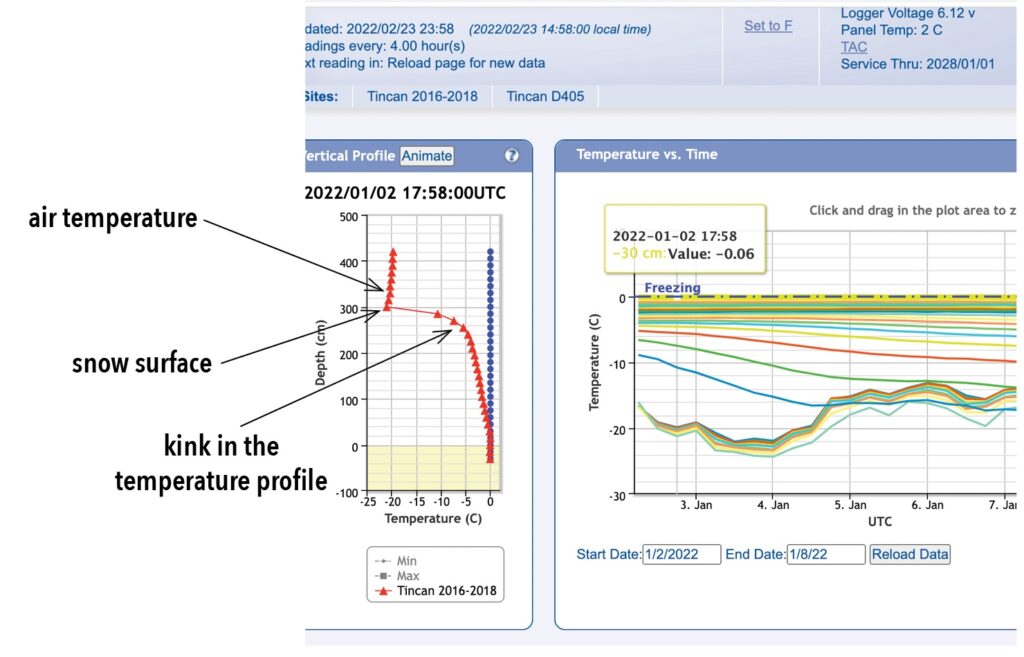- March 25, 2024
Tags
Tags
Hey, Northerners! Have you ever skied soft snow, weeks after the last storm, that has been preserved by the mid-winter bitter cold? Some call it recycled powder or settled powder, but it’s actually an undocumented type of snow. Colloquially known as urnal near-surface facets. These facets may preserve good skiing while on the surface, but once buried, they often create a persistent weak layer for avalanches.
Urnal faceting is unique to the wintery north, such as central Alaska, where the sun doesn’t shine or its oomph has been filtered out by its low angle. This consistent cold, combined with clear skies, causes the snowpack’s top layer—30 cm— to maintain a steep temperature gradient that’s conducive to faceting.
Near-surface faceting produces a layer of small (up to 1 mm) faceted crystals on the top of the snowpack. In 1998, snow scientist Karl Birkeland presented three processes that form near-surface facets, depending on the source of the steep temperature gradient. 1) Diurnal near-surface faceting occurs from a daily cycle of warm days and cold, clear nights. 2) Radiation near-surface faceting occurs from a balance between incoming solar radiation and outgoing longwave radiation. 3) Melt-layer near-surface faceting occurs when new cold snow is deposited on a melted-layer and is followed by clear skies.
The different near-surface faceting processes are driven by changing the energy balance inputs. It’s a continuum of processes. Birkeland also mentions a fourth category that occurs at high latitude, which is what we’re calling urnal facets, a term possibly coined by Alaska helicopter ski guide Henry Munter. It’s like diurnal faceting, but without the daily cycle. While urnal faceting is a specific term, it’s okay to simply call these near-surface facets, or surface facets. They often form together with surface hoar— the frozen equivalent of dew that forms a weak and persistent layer once buried—producing a double whammy weak layer.
The snowpack temperature profile during urnal faceting remains consistent during the cold and clear weather. It keeps a steep temperature gradient in the top 20-30 cm of the snowpack. At about 30 cm depth, we see a distinct kink in the temperature profile, where it shifts to a shallow temperature gradient to the ground.

So, the big question is, why is the temperature profile kinked? It other words, why doesn’t the temperature profile become a straight line as a shallow temperature gradient throughout? I took this question to the world authority of near-surface faceting, Karl Birkeland.
Birkeland says that a number of influences keep the temperature profile kinked: 1) snow is a very effective emitter of longwave radiation, 2) space is really cold, and 3) when the sky is clear so much longwave is emitted that the snow surface just cools and cools. “Our sense is that the rest of the snowpack is just unable to keep up with that heat loss, especially since conduction within the snowpack is not as efficient for energy transfer as longwave losses from the surface.”
Below is the original diurnal faceting diagram from Birkeland’s 1998 paper. Urnal faceting is effectively the night portion (right side) of his diagram. The snow surface is losing longwave radiation both night and day, while the temperature around 30 cm depth remains relatively warm.

A study in January 2022 at Turnagain Pass, Alaska, showed a good example of an urnal faceting and avalanche cycle. From January 1 through 7, the skies were clear, the air temperature was around 0° F, and the wind was light. A storm on January 8-13 brought snow, wind and avalanches releasing on the buried layer of urnal facets.

This chart shows the snow temperature at the Tincan study site at Turnagain Pass. The vertical temperature profile (red line) shows the snow depth is about 300 cm, as visible by the distinct turn in the temperature profile at 300 cm. From about 300 cm to 270 cm, the temperature gradient is steep—over 10° C per 10 cm—and well beyond the 1° C per 10 cm required for faceting metamorphism. At 270 cm, the temperature profile kinks between the steep temperature gradient above and the shallow temperature gradient below.

For recreational skiers, it’s good to keep urnal faceting in perspective. Having a keen interest in snowpack, and nature in general, is a good thing—it’s how we evolve and learn. But understanding the nuances of urnal faceting doesn’t necessarily improve your backcountry safety. What’s important here is that facets form a persistent weak layer once buried. Persistent weak layers are unpredictable and kill the most skiers—regardless of how they’re formed.
Joe Stock is an IFMGA mountain guide, an avalanche educator, a freelance writer, and author of the book, “The Avalanche Factor: Understanding and Avoiding Avalanches.” He’s based in Anchorage, Alaska, and he guides all over the world.
The Powder Cloud is dedicated to providing you the education and mentorship required to travel safely and find the happiness in the backcountry.
We’d like to ask for your support—for our scrappy editorial team, our wise and experienced contributors and to help us develop new and creative ways to educate all backcountry skiers and riders.
If you are able, please consider supporting us. Thank you and we appreciate you.
We have a favor to ask of our backcountry community. Powder Cloud believes our educational content and journalism should be easily accessible to all backcountry riders. A majority of our content is free, and we strive to limit annoying distractions like blinking ads, paywalls and pop-up screens.
We need your support to sustain the work we and our contributors provide, and to help us develop new and exciting ways to educate our community.
With as little as $5, you can help our mission—to provide backcountry skiers and riders the mentorship they require to travel safely and find the happiness. It only takes a minute and we’re so grateful and appreciate you.